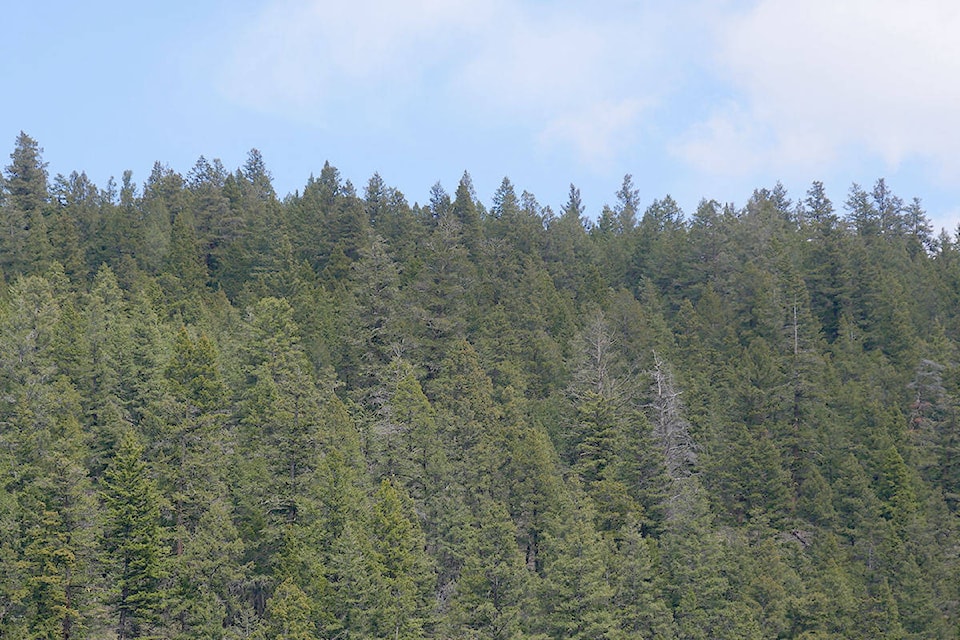Fuel mitigation plans are underway in the 100 Mile House District woodlot and community forest.
Approval letters from the Forest Enhancement Society of B.C. have been received for funding to initiate fire mitigation action planning in Woodlot #577 and 100 Mile Community Forest and the District and the 100 Mile Development Corporation are awaiting the Recipient Agreement to be signed prior to commencing work, according to a release. On the ground treatments are anticipated to start as early as late June.
The desired outcome is to create fuel breaks to give better fire mitigation and increased fire protection for 100 Mile House, the forest and woodlot itself as well as cell tower infrastructure.
“The treatments will reduce ladder fuels (removal of small trees), reduce the chance of crown fire initiation (pruning of remaining trees to approximately 2 m from the ground), and reduce the amount of heat in the crown if a fire starts (open up stand crown spacing by thinning of mature trees and removal of smaller mature trees). The treatments will be located along private lot boundaries, access points to the tenures and along power lines associated with the cell towers.”
Community Forest Managers have also submitted paperwork for fuel treatment blocks along Horse Lake Ridge, according to the release.
Trap trees
The District and the Development Corp are also waiting for approval of blanket salvage permits to start the 2018 Douglas Fir Trap Tree Program, which will take place in Woodlot #577 (on the hill below the cell towers at 99 Mile), the base of Horse Lake Ridge (behind the Horse Lake Christian Fellowship Church) and the cell tower site (at the top of the old ski hill in town).
“Beetle repellants have been placed along the face of Horse Lake Ridge. These are used in conjunction with the Trap Tree Program to drive beetles out of non-operable areas and attract them into the Trap Tree Program area.”
Training
They have also entered into an agreement with the BC Wildfire Service for training fire suppression crews to fall trees.
“The District and the Development Corp are actively engaging with the BC Wildfire Service, offering opportunities for practical training, and implementing fuel mitigation actions in areas identified as high priority.”
Other fuel management activities
Other fuel management activities planned for the 2018 season include logging small pine blocks along Hwy 24, primarily between the power line and Inman Road. Six small blocks are proposed in that area. Approvals are pending. In addition, blocks of blowdown at east end of the Community Forest area, between Interlakes and Doman Road are also planned. The blowdown event occurred in May 2017.
Cooperation with Canim Lake Band
Finally, the District and the Development Corp are working closely with the Canim Lake Band Natural Resource Department, because fuel management challenges in the Community Forest are very similar to those found in Canim Lake Band’s First Nations Woodlands Licence
